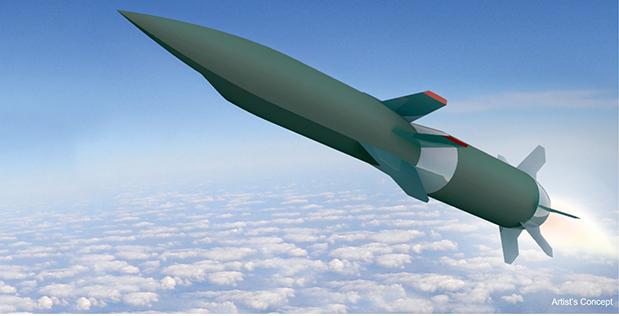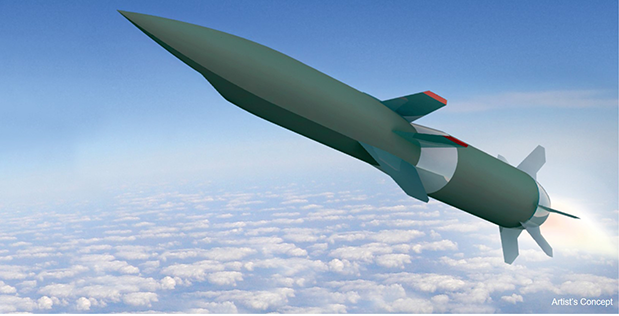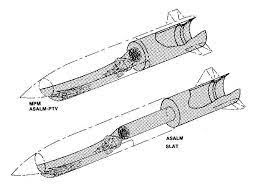Forest Green
ACCESS: Above Top Secret
- Joined
- 11 June 2019
- Messages
- 9,530
- Reaction score
- 17,486
This doesn't really fit ARRW or PGSW, so I started a new thread.
Hypersonic BoogalooHeeeey... an ASALM-2.
IF CDR isn't until 2023 they probably won't fly before 2025.
ARRW, admittedly not the best example given the test failures, concluded CDR in late February 2020 and had it's first flight test in early April 2021. If they're planning to conclude CDR in summer/Q3 2023, assuming it goes well, flight tests starting in Q4 2024 should be very doable.IF CDR isn't until 2023 they probably won't fly before 2025.
IF CDR isn't until 2023 they probably won't fly before 2025.
ARRW, admittedly not the best example given the test failures, concluded CDR in late February 2020 and had it's first flight test in early April 2021. If they're planning to conclude CDR in summer/Q3 2023, assuming it goes well, flight tests starting in Q4 2024 should be very doable.IF CDR isn't until 2023 they probably won't fly before 2025.
IF CDR isn't until 2023 they probably won't fly before 2025.unless there is a spy giving them the blue print of 3M22 Tsirkon
I’d feel a lot better if either HAWC demonstrator had a publicly successful flight test.
They haven't got a flight test?I’d feel a lot better if either HAWC demonstrator had a publicly successful flight test.
They intended to fly test HAWC since 2020 but some issue came upThey haven't got a flight test?I’d feel a lot better if either HAWC demonstrator had a publicly successful flight test.
Does anyone know about OASuW II
Press reports that a HAWC was inadvertently released and lost during a May captive carry flight were in error, sources said, but the missile was apparently damaged in that test, delaying additional captive carry tests for several months.
Raytheon officials said at the 2019 Paris Air Show that their HAWC might fly by the end of last year, but those predictions proved optimistic.
An attempt by the Defense Advanced Research Projects Agency and the Air Force to fly the first Hypersonic Air-breathing Weapon Concept [HAWC] experimental missile last week failed because of testing snafus, sources report.
DARPA announced in September it had completed captive-carry testing of the two HAWC vehicle types and would be flying at least one by the end of the year. Both Lockheed Martin and Raytheon Technologies have developed HAWC demonstrators, and sources said the Lockheed vehicle was the one being tested. They said last week’s attempt can’t be re-organized by the end of December.
“This is not about a design issue,” said a source familiar with the program. “This is dumb mistakes.”

Hypersonic HAWC Won’t Fly This Year Due to Ongoing Test Problems | Air & Space Forces Magazine
An attempt by DARPA and USAF to fly the first Hypersonic Air-breathing Weapon Concept experimental missile failed because of testing snafus, sources report.www.airforcemag.com
So what's the approximate range estimations if it has a JASSM-like footprint?
I guess it really comes down to the lift to drag ratio.Difficult to tell. I'd assume that it should have a 400-500 km of powered flight (200-300 seconds) but then it could cover a lot more distance post scramjet shut off so yes it is entirely possible that HACM could have very similar to JASSM - ER like performance.
This will be the point where to DoD says, "awesome, but we want Mach 10 so we're gonna cancel this".
How can a small scramjet accelerates beyond Mach 5 without a booster when it was just launched from a platform that everybody want you to believe was subsonic...The engine “kicked on” seconds after being released from an aircraft, which DARPA and the Air Force declined to identify, although DARPA expressed appreciation to “Navy flight test personnel.” The Navy has been conducting hypersonic missile research with F/A-18 aircraft.

It would have to either be small or almost demand an integral booster (or both). ASALM would fit the bill but it was "only" Mach 4 (Mach 5.4 in tests). Was apparently about 14 feet long. A shame DARPA quailed at the thought of developing LRASM-B. They'd be ahead of the game by now.For HAWC, yes it is approximately 20 ft cruiser and the booster all included. We know this because Navy has said that to be able to use HAWC on its AC's it needs to shrink its length down by about 25% for it to fit on elevators. 15 ft is just about the max you can get on an AC weapons elevator. X-51 featured a 14 ft cruiser and 25 ft. overall.

For HAWC, yes it is approximately 20 ft cruiser and the booster all included. We know this because Navy has said that to be able to use HAWC on its AC's it needs to shrink its length down by about 25% for it to fit on elevators. 15 ft is just about the max you can get on an AC weapons elevator. X-51 featured a 14 ft cruiser and 25 ft. overall.
For HAWC, yes it is approximately 20 ft cruiser and the booster all included. We know this because Navy has said that to be able to use HAWC on its AC's it needs to shrink its length down by about 25% for it to fit on elevators. 15 ft is just about the max you can get on an AC weapons elevator. X-51 featured a 14 ft cruiser and 25 ft. overall.
believe X-51 only had 200+ seconds of flight time and I assume the drag at those speeds rapidly decelerate the vehicle. There is no glide range unless you don’t mind being largely subsonic post burn out.
When to go “nose down” depends on what the velocity is when the engine quits. If it’s greater than best glide speed, then pull up, convert KE to PE, capture best glide AOA and maintain best glide speed is the way to go, but that’s not something you’d want a student pilot to practice. Below, push, capture, glide. FWIW my test pilot and I had to do the latter over Iraq summer of 2006 when the engine chip detector light when off on the engine gearbox.No exactly.
How do you compensate drag when an engine is lost in a single engine a/c? You nose down. The component that compensate for the loss of thrust (power) is the gravity time your speed.
